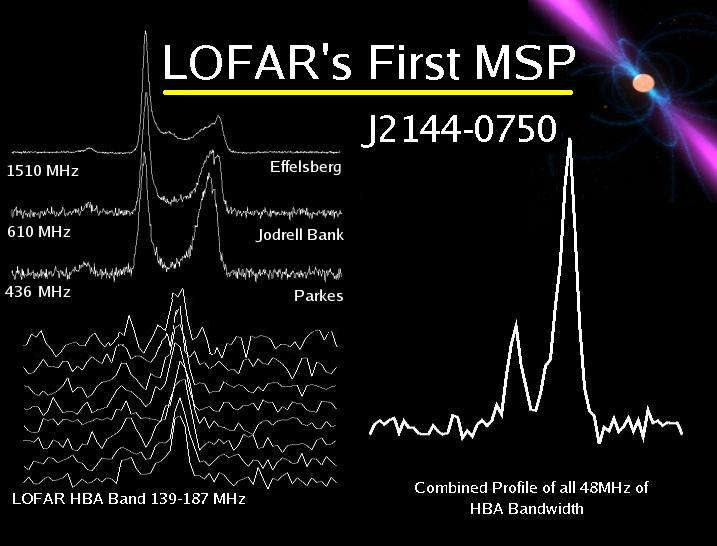| Description: | During Pulsar Busy Week 6 (December 2009) the LOFAR Pulsar Working group were able to detect the first millisecond pulsar seen with LOFAR. Millisecond pulsars rotate much quicker than "normal" pulsars making them harder to detect as scattering and dispersion can cause pulses to be smeared together making the pulsar appear as a continuous source. These data used fine frequency resolution, a total of nearly 4000 channels across the 48 MHz of bandwidth used, to enable sufficiently accurate correction of the dispersive effects of the interstellar medium. However this resulted in a restricted time resolution hence the relatively small numbers of bins in the pulse profile. As PSR J2145-0750 rotates just over 62 times per second LOFAR's frequency resolution is vital for observations of this and other MSPs. The next challenge will be to get coherent dedispersion working on complex voltage data so we can recover up to time resolution of 5 microseconds.
The plots on the show the pulse profile as a function of frequency as detected with LOFAR (163 MHz) , the Parkes Telescope (436 MHz), the Lovell telescope (610 MHz) and the Effelsberg telescope (1510 MHz). Interestingly, at low frequencies the pulse profile has evolved towards a stronger second peak, possibly signifying a different emission geometry. |

